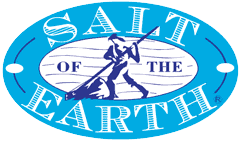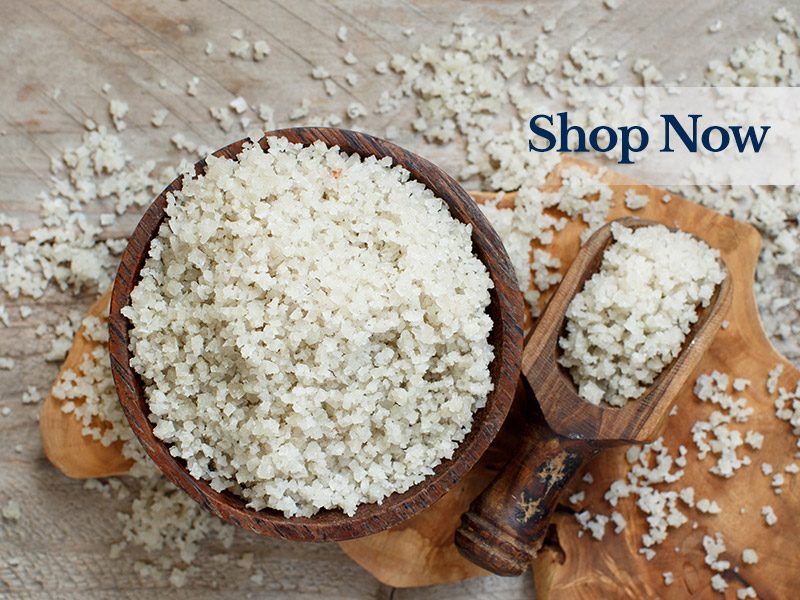Categories
Heavy Metal Confusion
There has been recent discussions on social media with misinformation regarding heavy metals in Celtic Sea Salt. We love that more people are taking an interest in what’s really in their salt and are proud of what we offer. We cannot speak for all Celtic Sea Salt brands, however, our Celtic Sea Salt is harvested from saltwater marshes in the Atlantic, where seawater flows directly from the ocean and crystalises naturally on a clay surface through the processes of sun and wind evaporation. It’s collected by hand and no artificial processes such as washing, chemical additives, bleaching or anti-binders are allowed. We pay close attention to the geographical location of our salt basins to minimise the risk of pollution. We harvest our salt away from any industrial areas and ensure that the water flow is uncontaminated. As part of our commitment to quality, we test our salt regularly for heavy metals, insoluble matter, nitrates, phosphates, bacteria, hydrocarbons, pesticides and even radioactivity.
It’s easy to get swept up in social media trends, but when it comes to our health, it is essential to rely on credible, evidence-based information, not advice from influencers chasing their next like or profiting from pushing an alternative product. In Australia with our strict food standards lead poisoning is not typically associated with food products. As lead is naturally occurring in the environment, it cannot be completely removed from our food supply. To help minimise any potential risk, maximum allowable limits have been established worldwide including Food Standards Australia New Zealand (FSANZ). These limits are based on conservative, science-backed assessments to protect even the most vulnerable people in the population (like children and pregnant women). Salt to the Earth Celtic Sea Salt tests approximately 5.5 times below this standard.
To put this in perspective, a microgram (ug) is equivalent to one millionth of a gram (extremely small quantities). 1000 micrograms is equivalent to 1 milligram (mg).
FSANZ has set the maximum allowable limits for heavy metals in salt as per below:
(i) 0.5 mg/kg of arsenic;
(ii) 2 mg/kg of lead;
(iii) 0.5 mg/kg of cadmium;
(iv) 0.1 mg/kg of mercury.
You can view the details of this on the following link – Australia New Zealand Food Standards Code – Schedule 19 – Maximum levels of contaminants and natural toxicants – Federal Register of Legislation
Follow me now with the below equations to breakdown these standards and outline the maximum allowable limits per day:
Maximum allowable limit of Lead in salt is 2mg/kg
To convert 2 mg/kg into micrograms per gram (µg/g):
2mg/kg= 2 times 1,000 = 2,000µg/kg divided by 1,000g = 2µg/g
2ug/g times the recommend daily consumption of 5 grams per day = 10ug/day
Salt of the Earth Celtic Sea Salt has lead levels tested at 0.36mg/kg
To convert 0.36 mg/kg into micrograms per gram (µg/g):
0.36mg/kg= 0.36 times 1,000 = 360µg/kg divided by 1,000 g = 0.36µg/g
0.36µg/g times the recommend daily consumption of 5 grams per day = 1.8ug/day
Over 5.5 times lower than the food standards
Lets compare these daily amounts with what we would consume from other food sources that are still considered below concerning values…
FSANZ has set the maximum allowable limits for heavy metals in Meat & Vegetables as per below:
| Meat of cattle, sheep, pig and poultry (excluding offal) | 0.1 |
| Vegetables (except brassicas) | 0.1 |
Let’s say you eat 200g of meat or vegetables at 0.1ug/kg
0.1mg/kg times 1,000 = 100µg/kg divided by 1,000 g = 0.1µg/g
0.1ug/g x 200g = 20ug/day
If you ate 200g of both meat and vegetables, you could be consuming 40ug/day
Brassicas include vegetables such as broccoli, Brussels sprouts, cabbage, cauliflower, collard greens, kale, and turnips. FSANZ has set the maximum allowable limits for lead in Brassicas Vegetables at 0.3mg/kg
3 times higher than other vegetables meaning 200g of green leafy vegetables could be 60ug/day
World Health Organisation (WHO) has established a guideline value for maximum lead levels in drinking water of 0.01mg/L
To convert 0.01mg/L (milligrams per litre) into micrograms per litre (µg/L):
1 milligram (mg) = 1,000 micrograms (µg)
0.01mg/L × 1,000 = 10µg/L
Recommended daily amount of water is 2-3 litres = 20ug to 30ug per day
Please note, a standard water filter can only remove sediment, rust and particles larger than the microns of the filter. Any dissolved heavy metals or chemicals are not removed by a water filter.
As you can see from the above calculations based off factual information provided by FSANZ heavy metals found in salt is extremely low in comparison to most foods and water we consume yet people do not get lead poisoning from their food in Australia. The main cause of lead poisoning in Australia is exposure to lead-contaminated dust and soil, particularly in mining and smelting towns, lead fishing sinkers, soldering, lead toys purchased online through websites like Temu or Shein or via restoration of older houses with lead paint. With this in mind, the misinformation spread via social media should be taken with a grain of salt 🙂
We understand people being concerned about lead being present in Celtic Sea Salt, especially with so much misinformation being spread. To provide peace of mind, one of our owners Sheree decided to test her own lead levels. She has been using, inhaling and consuming Celtic Sea Salt daily for 24 years. Every morning, she drinks around a 1/4 of a teaspoon of Celtic Sea Salt in water, she cooks for the family with it and garnishes all their meals with it. She wanted to check if lead had accumulated in her body over the 24 years of consumption. We are happy to report that her blood test results came back showing lead levels below detectable limits, well below any concerning threshold. You can view this report here – COA Salt of the Earth (Heavy Metals) Sheree BLL Test 260724. This should reassure customers that Celtic Sea Salt, as we produce it, is entirely safe.
We’d like to emphasise that we pride ourselves on our quality. Our salt undergoes rigorous testing and is harvested with the utmost care to ensure purity. It’s free from synthetic additives, preservatives and artificial processes. As we have done so since 1989, our goal is to provide customers with a product that retains the full mineral content of the sea, while ensuring it remains safe from contaminants so our customers can enjoy the full benefits of natural, mineral-rich salt with confidence!

